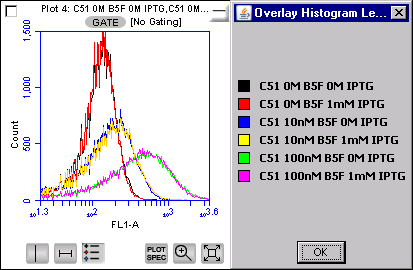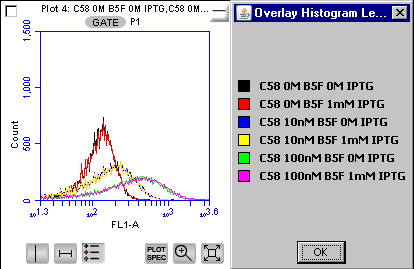Team:Washington/Project/CDS
From 2009.igem.org
Custom Display System
Problem
The underlying design of the streptavidin display constructs in the registry has the displayed protein bound close to the cell membrane. This constraint could be preventing streptavidin on the surface of the cell from forming tetramers lowering its effectiveness at binding biotin. Furthermore these existing display systems prevent the addition of another protein into them, preventing the user from displaying other proteins.
Idea
The first goal of making a new display vector was to incorporate a GS linker between the displayed protein and the OmpA protein anchoring in in the cell wall. However when reviewing the construct we decided to add some other useful features as well. Maintaining the Lpp tag (to direct the protein to the periplasm) and the OmpA trans-membrane regions (for anchoring the construct) of the original 2006 parts we added:
- GS Linker (Gly4Ser)4 - allowing for more space between the protein and the cell wall
- TEV - Tobacco Etch Virus (TEV) protease site allowing for cleavage of displayed proteins
- NheI restriction site - allowing for the insert of any BioBrick protein into the display construct
Current Status
Custom Display Vector:
- 1 trans-membrane OmpA: BBa_K215200
- 5 trans-membrane OmpA: BBa_K215201
We submitted the Custom Display Vector to the registry as BBa_K215200 and BBa_K215201 (for 1 and 5 trans-membrane OmpA). We are currently inserting GFP into the display system to verify that the OmpA display system is working, but we will not have any data by the jamboree.
Custom Display Vector with wild-type monomeric streptavidin inserted:
- 1 trans-membrane OmpA: BBa_K215210 (equivalent to 2006 Harvard iGEM: BBa_J36848 with an extra linker between OmpA and the streptavidin)
- 5 trans-membrane OmpA: BBa_K215211 (equivalent to 2006 Harvard iGEM: BBa_J36850 with the extra linker)
We inserted wild-type monomeric streptavidin to see if the extra linker would make the streptavidin functional. These parts would be equivalent to the 2006 Harvard iGEM parts, BBa_J36848 and BBa_J36850, except with the extra linker and TEV protease site. These parts were submitted to the registry as BBa_K215210 and BBa_K215211. We ran the same flow cytometry assays that we used for the Harvard parts - the streptavidin is non-functional (see Display and Notebook - this is the same cytometry assay that we used for characterizing the 2006 Harvard parts):
 1tmr OmpA, BBa_K215210 |
 5tmr OmpA, BBa_K215211 |
| Cytometry showing no difference in bound biotin-conjugated fluorophore for 1mM IPTG induced vs uninduced cells at different fluorophore concentrations. Conclusion: Wild-type monomeric streptavidin shows no measureable activity when expressed as a fusion protein with 1 or 5 trans-membrane OmpA. | |
 "
"


